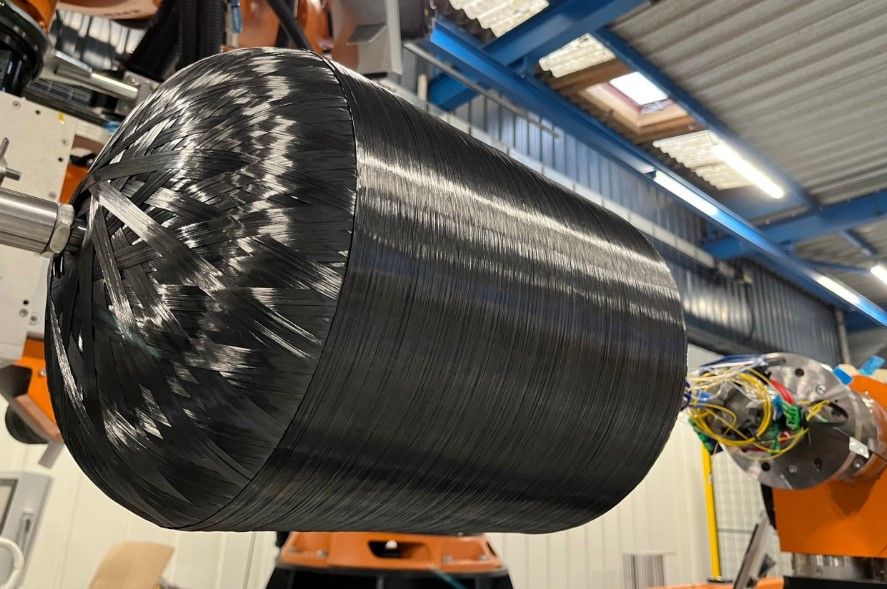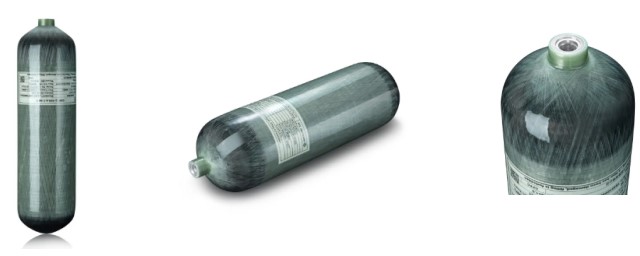The pursuit of space exploration stands as a monument to human innovation and ambition, symbolizing our quest to reach beyond the confines of our planet. Central to this monumental endeavor is the development of sophisticated life-support systems for spacecraft and space stations, systems that must be both efficient and reliable to ensure the safety and success of missions. One of the most significant advancements in this area is the introduction of carbon fiber composite cylinders, a technology that has revolutionized space exploration by enhancing spacecraft capabilities and efficiency.
The Weight-Saving Revolution
In the aerospace industry, every kilogram counts. Traditional metal cylinders, while robust and reliable, pose a significant weight challenge. This excess weight translates into higher launch costs and reduced payload capacity, limiting mission scope and potential. Carbon fiber cylinders, with their exceptional strength-to-weight ratio, address this critical issue by offering a lightweight alternative that does not compromise on durability or performance.
The remarkable properties of carbon fiber allow for a substantial reduction in the weight of life-support systems, which include storing gases like oxygen, nitrogen, and hydrogen. By replacing heavy metal components with carbon fiber composites, space missions can achieve unprecedented efficiency, leading to lower fuel consumption and increased payload capacity. This transformation opens new avenues for mission planning, allowing for more scientific equipment, additional crew supplies, or advanced communication systems to be included in the spacecraft’s design.
How Carbon Fiber Cylinders Are Made
The process of manufacturing carbon fiber cylinders involves intricate engineering and precision. These cylinders are created by winding layers of carbon fiber strands, impregnated with resin, around a mold in specific patterns that maximize strength and minimize weight. The fibers are strategically aligned to resist pressure and impact, ensuring the cylinder can withstand the rigorous demands of space travel. After winding, the cylinders undergo curing, where the resin hardens to create a solid, robust structure.
This complex manufacturing process is essential for producing cylinders that are lightweight yet capable of withstanding the extreme pressures and temperatures encountered during space missions. Despite the high initial cost of production, the long-term benefits of reduced weight and increased efficiency justify the investment, making carbon fiber cylinders a cornerstone of modern aerospace engineering.
Supporting Vital Life-Support Systems
The integration of carbon fiber cylinders into spacecraft’s life-support systems is crucial for maintaining a habitable environment for astronauts. These cylinders are used to store and transport vital gases under high pressure, ensuring a constant supply of breathable air and maintaining the necessary atmospheric conditions for human survival in space. Additionally, they play a pivotal role in controlling cabin pressure and supporting various pneumatic systems aboard the spacecraft.
Oxygen and Nitrogen Storage:
In space, oxygen and nitrogen are fundamental to creating a livable atmosphere inside spacecraft and space stations. Carbon fiber cylinders store these gases at high pressures, ensuring a steady and reliable supply for respiration and other critical functions. Their lightweight nature allows for more extensive storage capacity, prolonging mission durations and expanding the potential for deep-space exploration.
Fuel Storage:
Carbon fiber cylinders are also employed to store fuel, such as hydrogen and other propellants used in spacecraft propulsion systems. The ability to store fuel efficiently while minimizing weight is crucial for long-duration missions, where every extra kilogram impacts the overall success and feasibility of the mission.
Advancements in Spacecraft Design
The adoption of carbon fiber cylinders has significantly influenced spacecraft design, offering engineers greater flexibility and creativity. The weight savings provided by these cylinders enable designers to allocate resources more efficiently, leading to the inclusion of advanced technology and improved mission capabilities.
Enhanced Scientific Exploration
With the reduced weight of carbon fiber cylinders, spacecraft can accommodate more scientific instruments and research equipment. This allows for more comprehensive exploration and data collection, advancing our understanding of space and contributing to scientific breakthroughs in areas such as astronomy, planetary science, and astrobiology. The additional payload capacity also supports extended missions, enabling spacecraft to travel further and stay operational for longer periods.
Improved Structural Integrity
Carbon fiber’s superior strength and resilience enhance the structural integrity of spacecraft. This property is particularly important when dealing with the harsh conditions of space, where temperature extremes, radiation, and micrometeoroid impacts pose significant risks. Carbon fiber cylinders offer exceptional resistance to these threats, ensuring the safety and reliability of the spacecraft’s life-support systems and other critical components.
Safety and Reliability in Space
Safety is paramount in space missions, where the environment is unforgiving and the margin for error is minimal. Carbon fiber cylinders contribute to the overall safety and reliability of spacecraft by offering a durable and robust solution for storing gases and other vital resources.
Corrosion Resistance:
Unlike traditional metal cylinders, carbon fiber composites are highly resistant to corrosion, which is crucial for maintaining the integrity of the storage system over time. This resistance ensures that the cylinders remain functional and safe throughout the mission, protecting the astronauts from potential hazards.
Impact Resistance:
The construction of carbon fiber cylinders minimizes the risk of catastrophic failure due to impacts or structural stress. This resilience is vital in space, where equipment must withstand the pressures of launch, re-entry, and space debris.
Looking Towards the Future: Sustainable Space Exploration
As the space industry evolves, the role of carbon fiber cylinders is set to expand, driven by the need for sustainable and efficient exploration. The demand for lightweight, reliable, and durable components is ever-growing, especially as space agencies and private companies set their sights on ambitious goals such as Mars colonization and deep-space missions.
Innovations in Carbon Fiber Technology
Continuous advancements in carbon fiber technology promise to deliver even lighter and more resilient cylinders. Research into new materials and fabrication techniques aims to further reduce weight and enhance performance, ultimately lowering launch costs and expanding the horizons of space exploration.
The Impact of New Space Era
The “New Space” era, characterized by increased private sector involvement and international cooperation, underscores the importance of technologies like carbon fiber cylinders. These components play a crucial role in ensuring the success of diverse missions, from satellite deployments to crewed deep-space explorations. As more entities enter the space race, the need for innovative, cost-effective solutions will drive further investment and development in carbon fiber technology.
Challenges and Opportunities
While the benefits of carbon fiber cylinders are substantial, challenges remain in their development and manufacturing. The high cost of raw materials and the complexity of the production process can pose financial hurdles. However, ongoing research and technological advancements are expected to reduce these barriers, making carbon fiber cylinders an increasingly viable option for space missions.
Conclusion: Building the Foundation for the Future
Carbon fiber cylinders have emerged as a foundational technology for the future of space exploration. Their unique combination of lightweight properties, durability, and reliability makes them indispensable in the quest to explore and inhabit space. As humanity stands on the brink of a new era in space exploration, the continued development and refinement of carbon fiber technology will be essential in overcoming the challenges of the final frontier, ensuring that our presence in space endures for generations to come.
By enhancing spacecraft efficiency, enabling longer missions, and supporting a broader range of scientific endeavors, carbon fiber cylinders are at the forefront of aerospace innovation, paving the way for future discoveries and the realization of humanity’s cosmic ambitions.
Post time: Jul-24-2024


